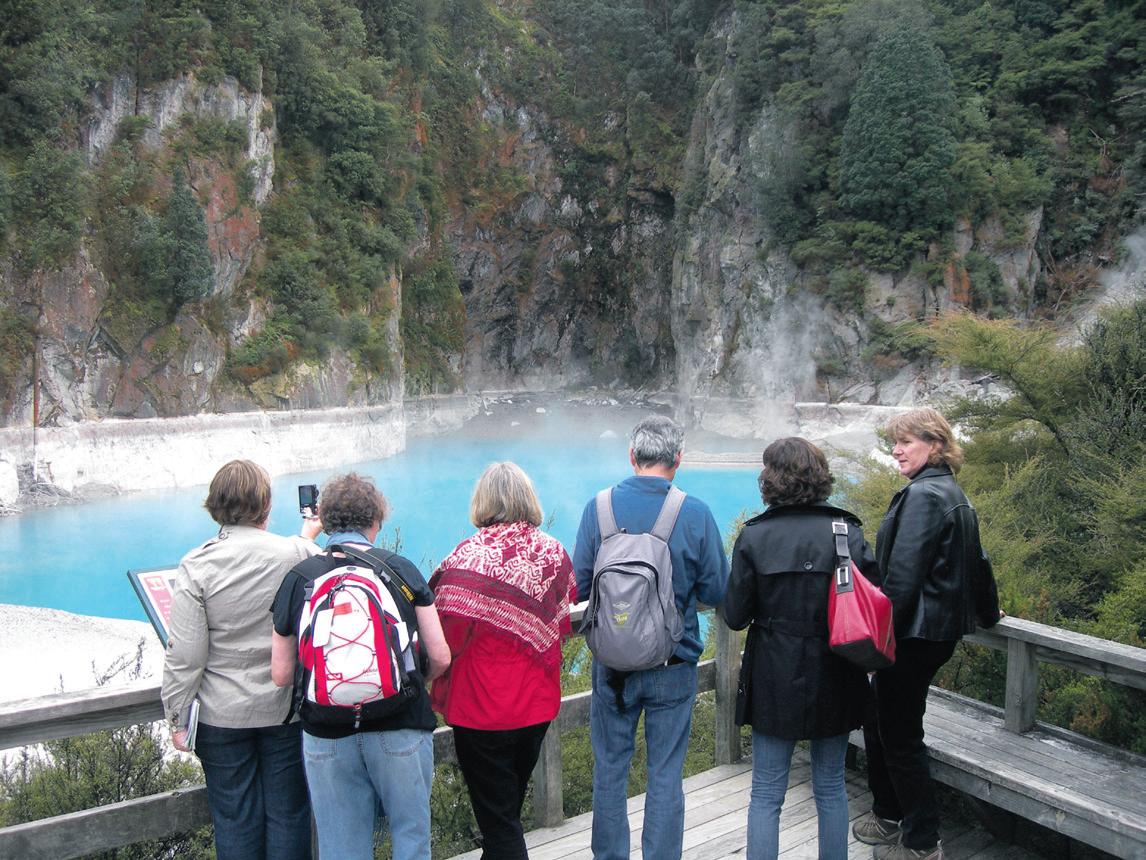
2 minute read
A hot date
from 2012-07 Sydney (2)
by Indian Link
Rotorua is a touristy town steaming with culture and geothermal features
The moment we enter the quiet and scenic townscape, the smell of sulphur fills the air, with sounds of intense hissing and bubbling, and the sight of rising steam – all of which challenge our olfactory, auditory and visual senses. “Kia Ora!” (Welcome!), says a young indigenous girl. The place looks like nowhere else, but we know its Rotorua, the planet’s geothermal wonderland and heartland of the Maoris, the first settlers of New Zealand.
Edged on the shores of a lake of the same name, Rotorua is one of New Zealand’s most tourist-haunted hideouts. Home to a population of 70,000, it is a relatively small quarter, picturesquely dotted with cobbled streets, historic buildings, manicured gardens and parks. It also shares space with myriad hotels, restaurants, cafes and nightclubs, endorsing the region’s contemporary lifestyle.
Just over third of the town’s population are of the Te Arawa clan of Maoris. Their ancestors circa 700 years ago canoed from Polynesia and laid claim to the land. Today their lifestyle, art and culture are a major drawcard of the destination, which is packed with heaps of other attractions - adventurous, thrilling and funfilled, to engage holiday makers of all kinds from culture-vultures, nature aficionados, adrenaline rushers, to families with kids.
Geothermal wonderland
However, experiencing the world’s most incredible earth forces is something that ranks at the top of everyone’s itinerary. Geography fans know that New Zealand and particularly Rotorua, is dotted on the Pacific Ring of Fire, stretched along which are some of the world’s most vivacious volcanoes, turbulent forces which release huge amounts of energy from inner-earth into the surface.
Geothermal activities can be seen in the form of skyrocketing geysers, hot springs and continually bubbling and plopping mud pools that looks like brown soup boiling in a large pot. Lazy drifts of steam escape from cracks and crevices in thermal parks, among well-laid gardens and even via gratings in residential streets throughout the city. About 1200 of them feature in and around Roturua, making the sanctuary the world’s geothermal Mecca.
Most of the Rotorua thermal features are sectionalised in five main areas. Whakarewarewa is the biggest, Hells Gate claims to be the sternest, Waiotapu seem to be the most colourful, Waimangu is the youngest, while Orakei Korako, as proclaimed by Lonely Planet, is the finest in the world. It is thrilling to meander through them and wonder at the amazing sights of steaming cliff faces, crater lakes of boiling water, hot waterfalls and rich mineral deposits which tint the landscape to a multicoloured palette of white, pink yellow, orange, red and green in a setting of lush bushland.
As it is not possible to see all of them during a short stay, we target Waimangu and Hells Gate volcanic parks for a ‘hot date’ with nature’s epic. Waimangu valley, created in 1886 by the Mt Tarawera volcanic burst, boasts to be the only hydrothermal system in the world wholly formed within written historic times. Surrounded by emitting steam from numerous outlets, the two most fascinating features of the valley are the 38,000 square metre Frying Pan Lake said to be the world’s largest of its kind, and the pale blue steaming water and delicate silica clay terracing of the Inferno Crater.
Before the eruption this domain housed the spectacular pink and white silica terraces, which were venerated as the eighth wonder of the world. We spotted photographs in the Rotorua Museum and later, standing in front of the wiped-out site we realised that nature, while giving something, also takes away much.
Hells Gate is another reserve where the raw powers of the earth’s volcanic forces can be









